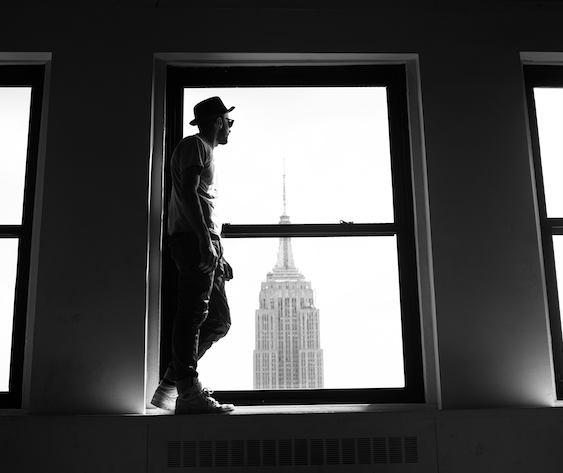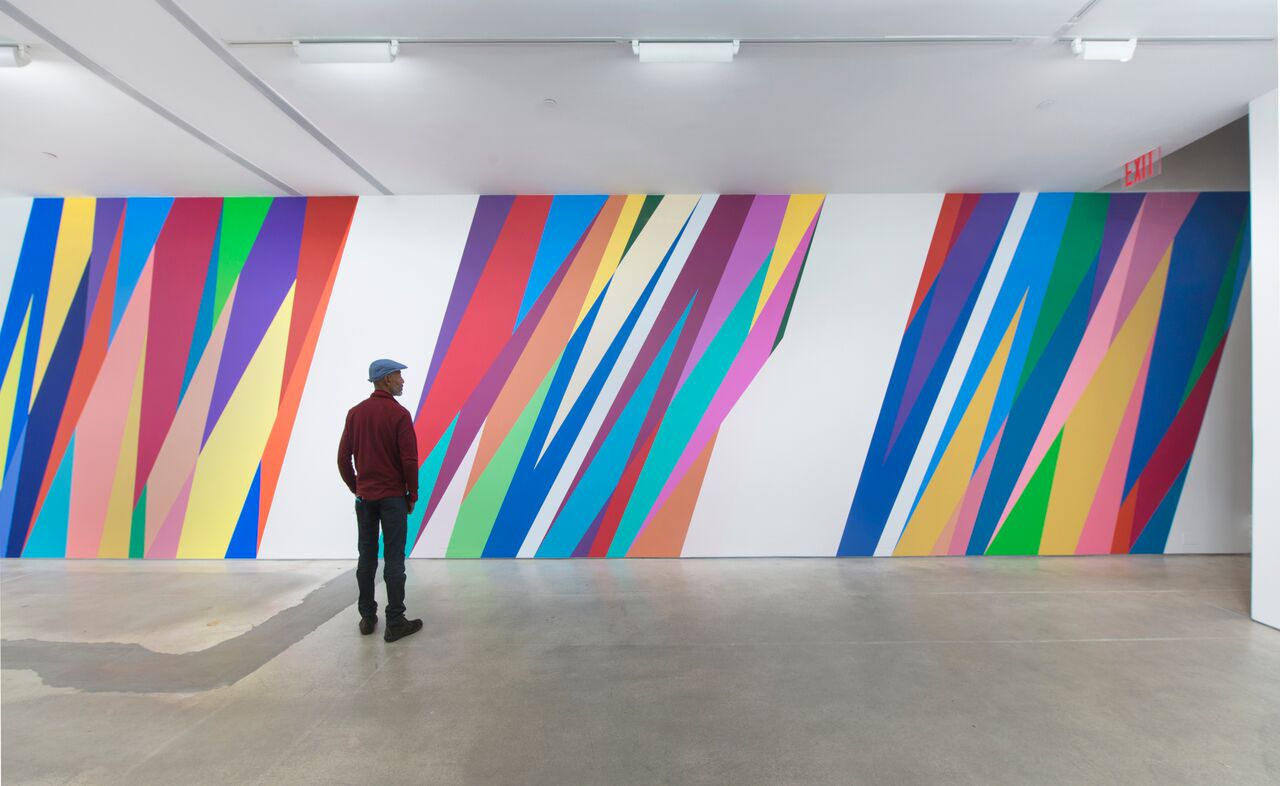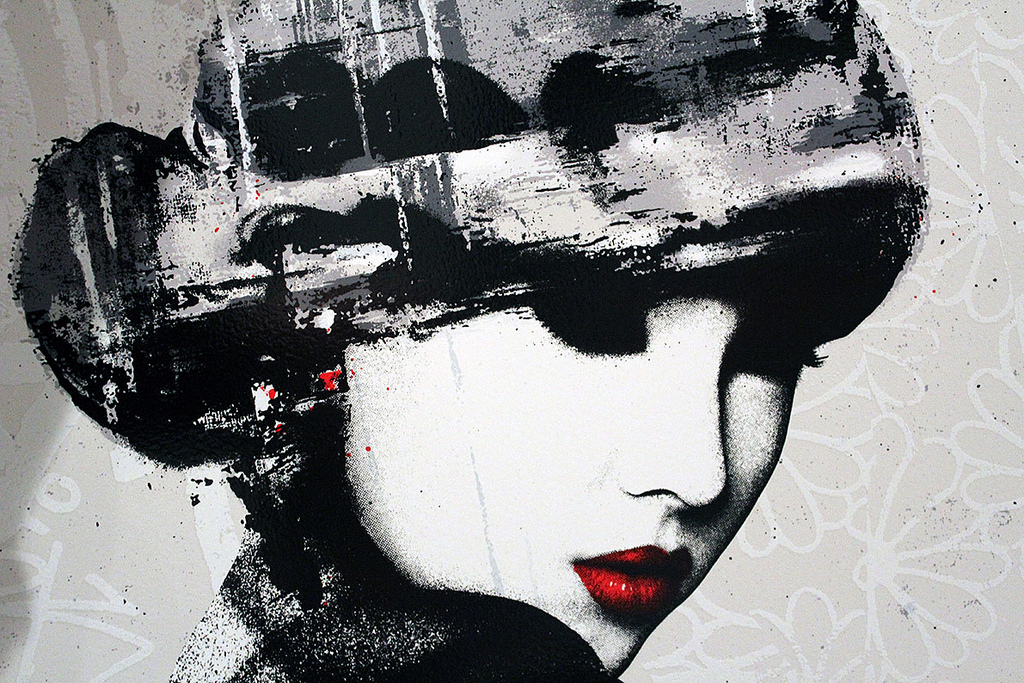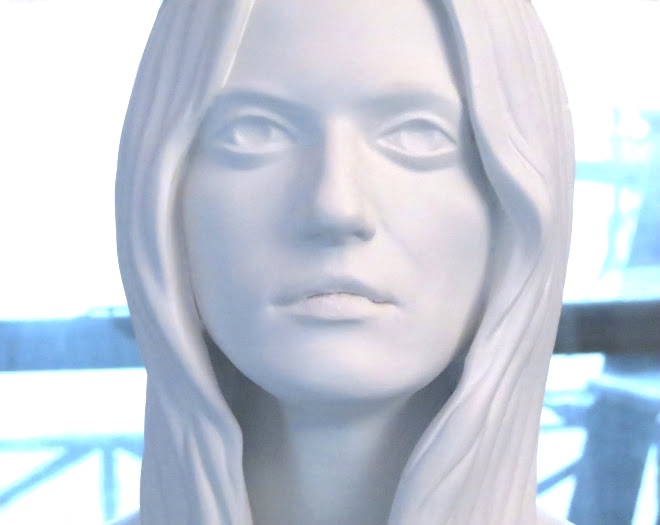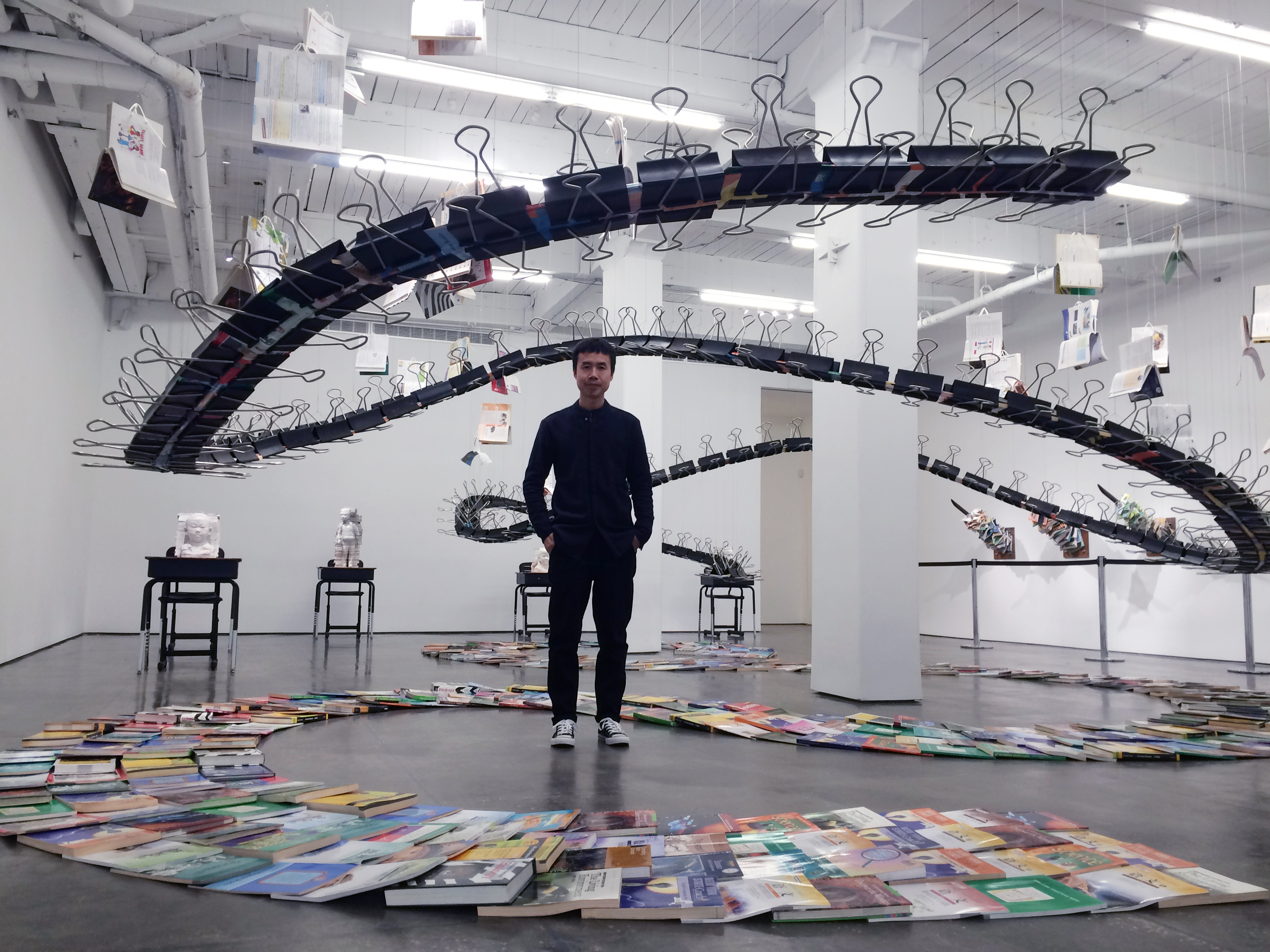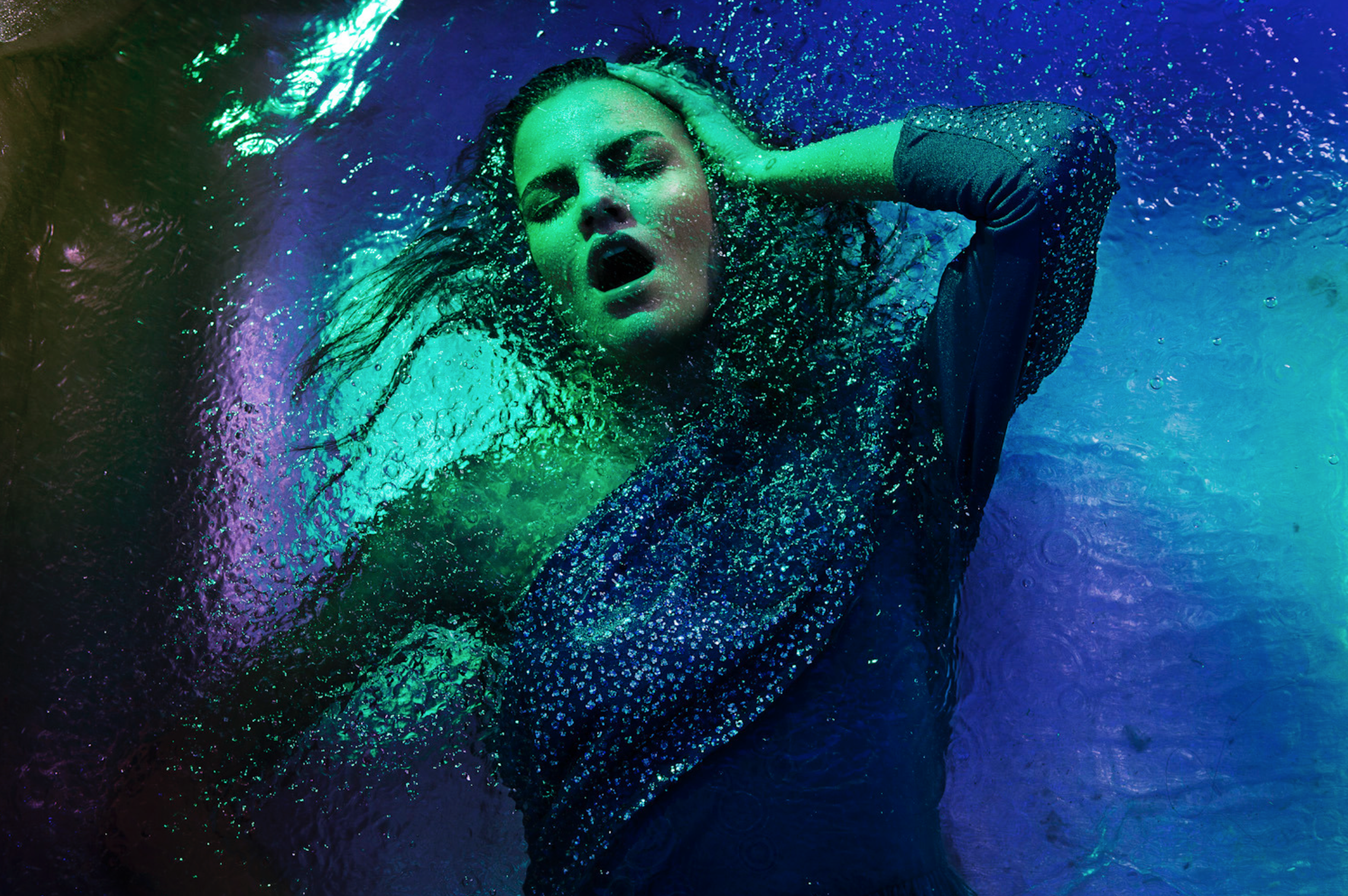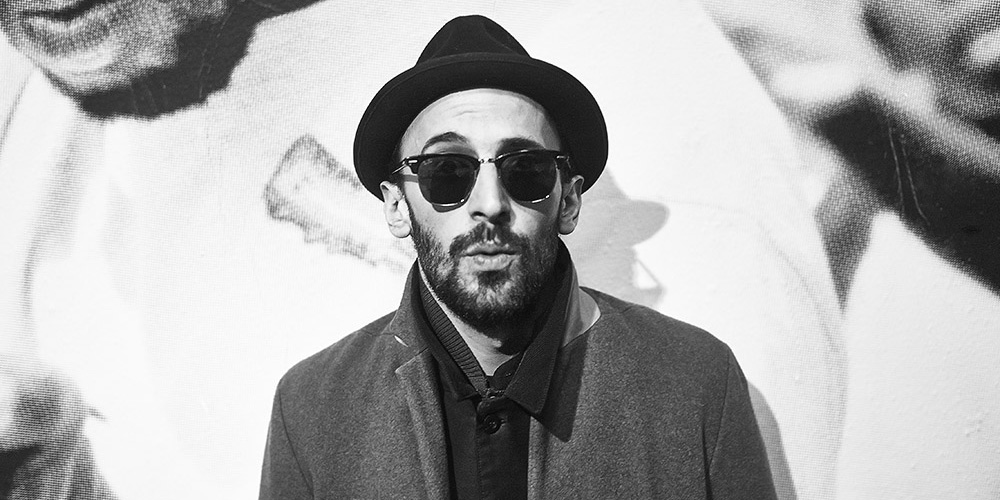
French artist JR, the street art sensation who rose to superstardom after receiving the coveted TED Prize in 2011, has an unusually charmed career. With a solid team behind him in Paris and New York and a dedicated social following (a whopping 764k on Instagram alone), he’s keeping his promise to use art to turn the world inside out. Start the New Year off catching up with JR and his latest installation, his film Ellis, why he always wears sunglasses, and his plans for 2016.
NEWEST WHEATPASTING
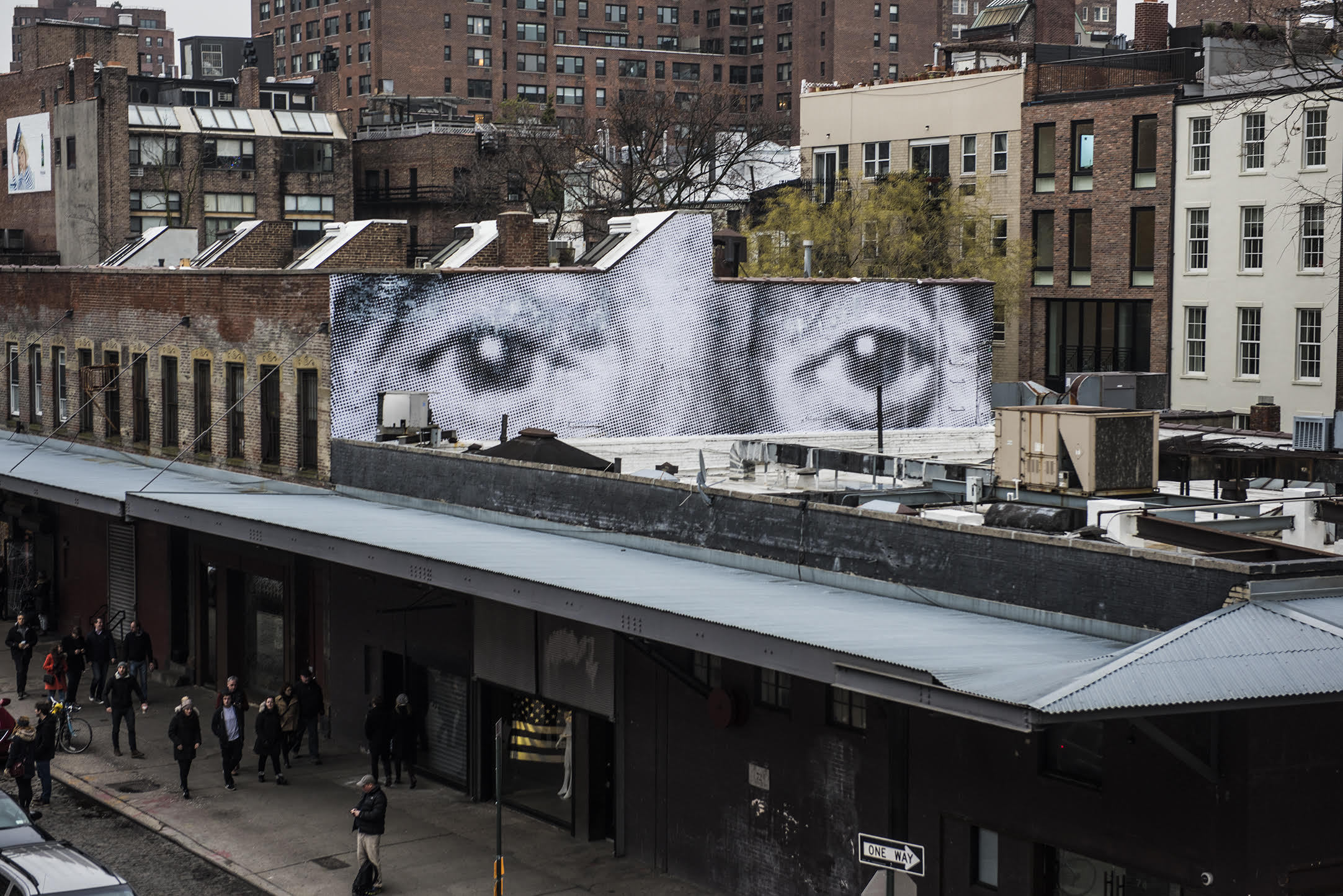
Christina: I saw your new wheatpasting in Meatpacking by the Whitney Museum! Tell me about the eyes.
JR: I’ve been working on projects about immigration for a couple years now, and I wanted to paste the eyes of an immigrant that couldn’t make it. So this is someone who arrived in Ellis Island and then got sent back at that time. Actually, my film [Ellis] is about the story of people who didn’t make it. So tomorrow is the first time I’m going to post and tell [about the wheatpasting]. Right now, it’s just eyes. I’ve seen many posts of this, but I separate the two aspects of the visual and the story. Stories get around much slower, but visuals can touch millions of people.
C: Did you find out why this man got sent back?
JR: There’s not much documentation. I know he was a reverent or religious person, but we don’t have much more information about him. There were many cases of people getting sent back because they were crazy—but you have to take all that with care because we don’t know. Some people got [to Ellis] after two months on a boat with red eyes, coughing, and a bit tired, and boom! They’d be called crazy. All I know is he got sent back and didn’t make it, so it was a rare photo.
“Some people got [to Ellis] after two months on a boat with red eyes, coughing, and a bit tired, and boom! They’d be called crazy.”
ELLIS
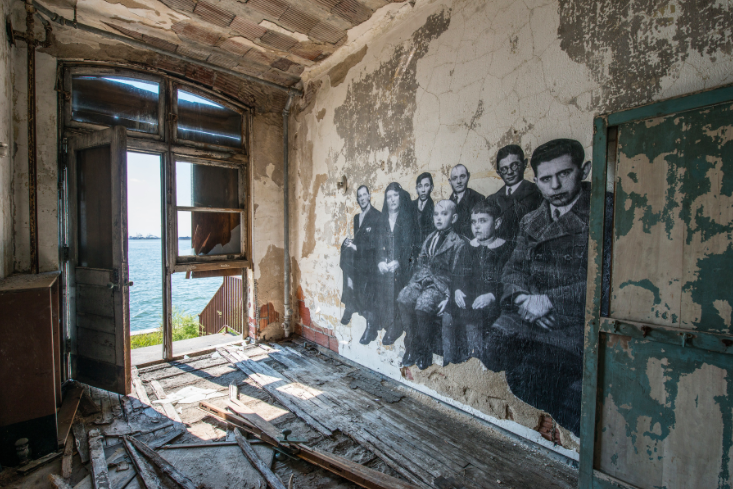
C: The theme of immigration has definitely stood out in your recent work, especially with your film Ellis. What got you interested in this whole idea?
JR: In all the projects that I’ve done, I’ve always touched on immigration without focusing on it. I’m a second-generation immigrant, and in a lot the places [I’ve worked], people dreamed of coming to where I live. A lot of the time people actually let me take their photos because they wanted to be in Paris, London, New York–anywhere their stories could get heard. Especially when I was in Africa, people wanted their photos to travel to the places they dreamt to see.
C: Did you always know about Ellis Island?
JR: Four or five years ago I discovered the existence of Ellis Island and the unrest of immigration through a book by Stephen Wilkes. I went there straight away, but I couldn’t walk in until 1½-2 years ago. That’s when I really started doing the pastings and everything, so it took me a good five years to get there and see how I could approach the project through the archives. It was only four or five months ago that it exploded around the world. Immigration is a constant subject–we’ve just reached a peak that we’ve never reached before.
C: You mean with all the refugees right now?
JR: Exactly! I went a year and a half ago to Lampedusa, Italy when there were already a lot of people migrating and met people just arriving from Syria on the boat, and you could feel that something was coming. No one could tell that it would explode, but it was getting really big and tragic so I went on a different island to meet the people. I wanted to work on this [immigration] project through history because history helps us understand the present better—so we don’t make the same mistakes.
WORKING WITH ROBERT DE NIRO
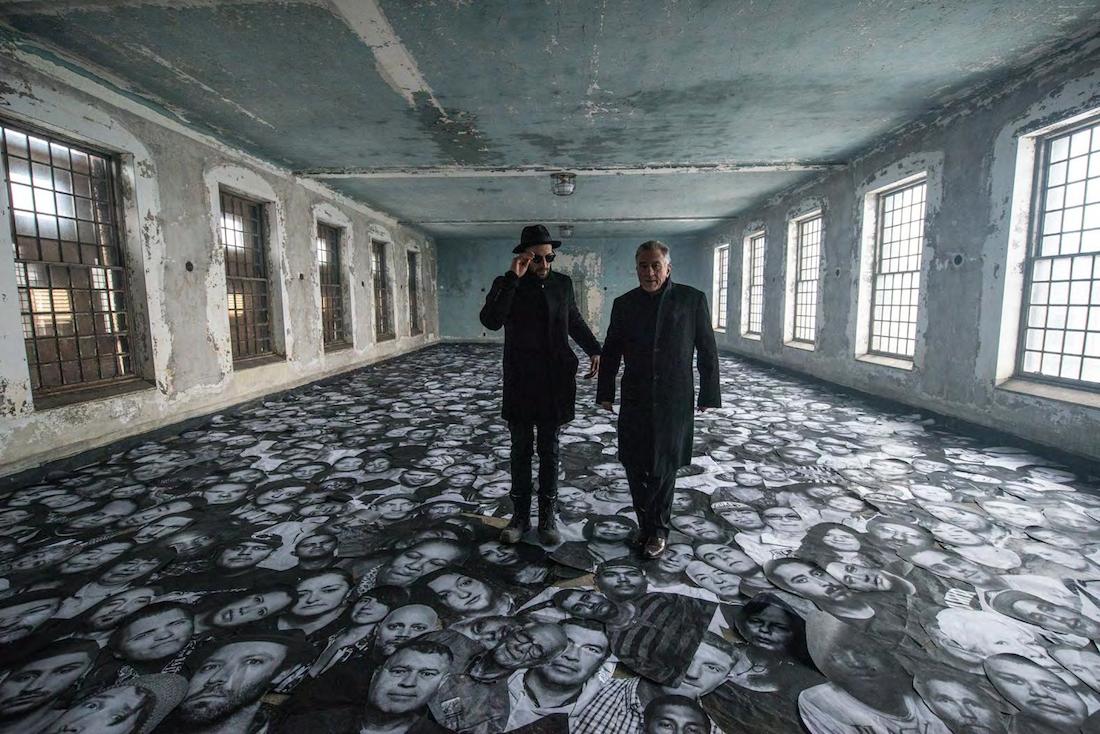
C: Robert De Niro is your star in Ellis—this is the first time he is in one of your films but you two have been working together for some time now. How did that start?
JR: We’ve worked together on many projects. I just did an artwork for the movie Joy thanks to him. But the best collaboration we’ve done is on Ellis. Really, he became one of my artworks in the film by doing what he does best, acting, and representing me and the people. I think he did it amazingly. So we collaborate at different levels. And for me, it’s a great way to learn from a visionary.
C: What do you feel like you learn from him?
JR: His approach to cinema and work, his dedication, the way he works constantly on different projects. He’s really focused. It’s a great inspiration for an artist to see people that have kept really strict codes in their work, and often that leads to great success.
TO COME IN 2016
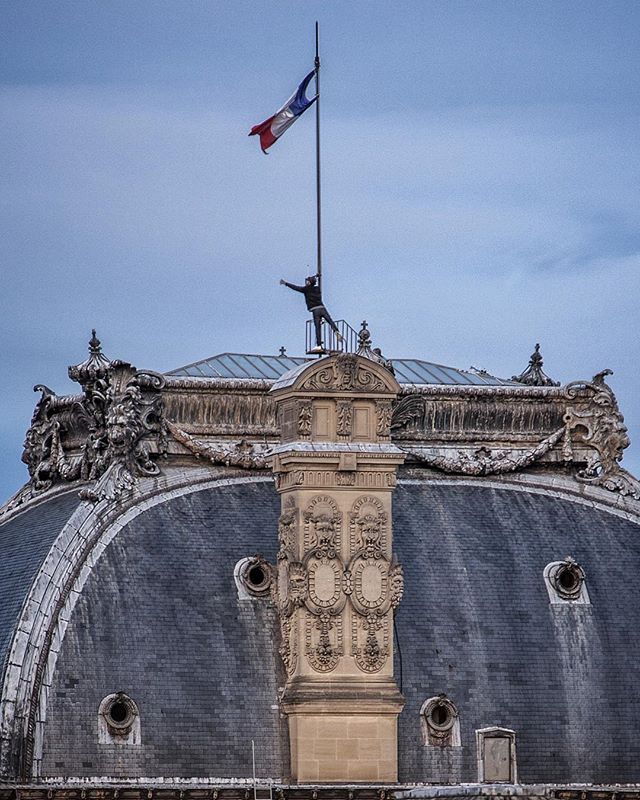
C: Is there anything specific that you’re excited about for 2016?
JR: One is the project at the Louvre for the end of May. There are a lot of sketches that have been validated and are in process, but there are a lot of other ideas that I want to put into the project so I’m working on something big there.
C: Are you pasting on the Louvre?
JR: There might be some of that too! And more. So, I’m working on pastings but also some stuff that I’ve never done. I can’t tell yet because there’s stuff I don’t know. There’s one big piece I already know where I’ll put, but I want to keep the surprise. I’m kind of searching.
EYES AND IDENTITY
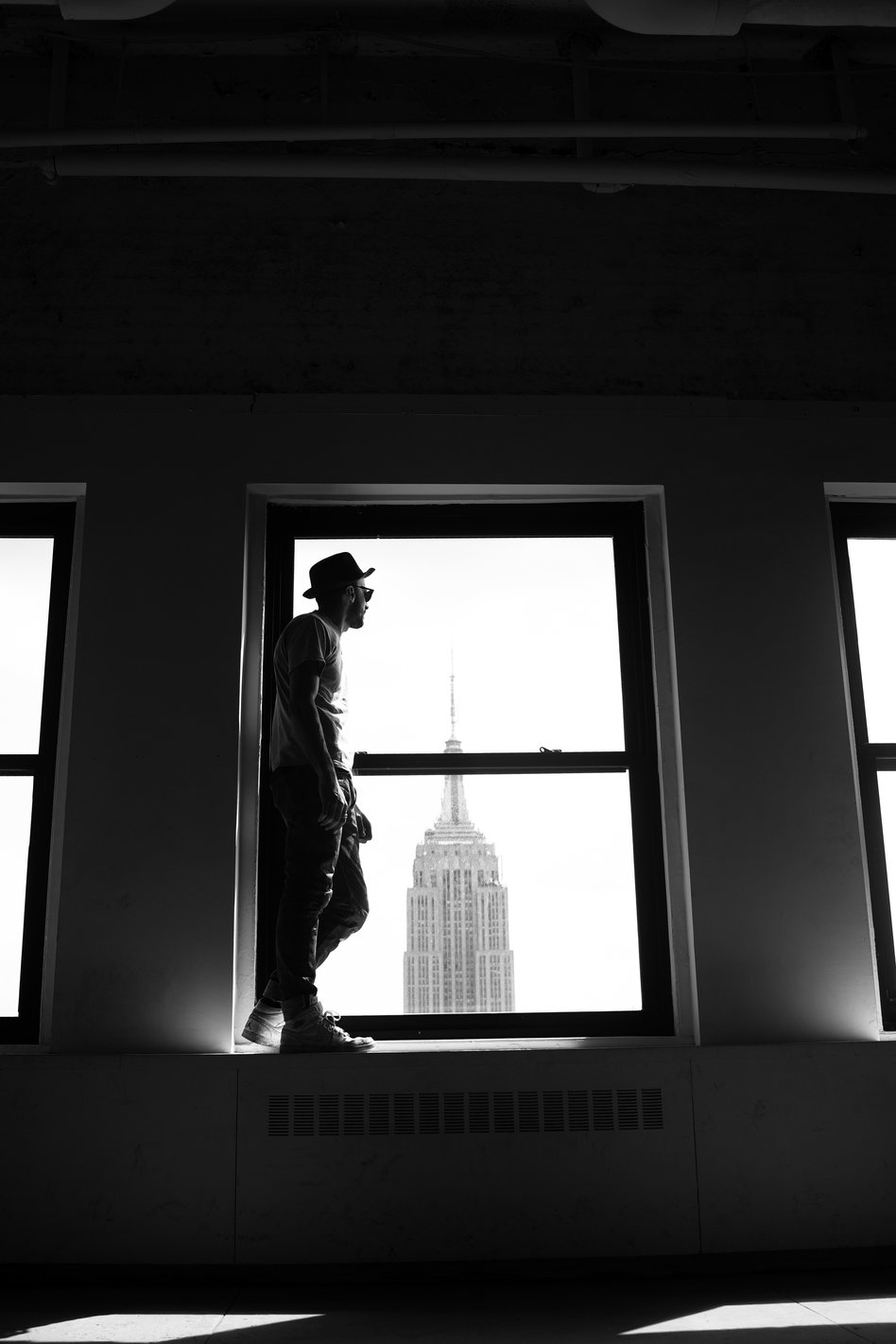
C: Do you feel like you have a particular fascination with eyes, or is it just about people?
JR: I guess it’s about people and faces, and then because the architecture of the buildings dictate the shapes [of the pastings], I’ve put up a lot of eyes and really felt the power of that. It became a way of representing one person but at the same time representing everybody. Eyes are almost the fingerprint of the person, and at the same time, it could be you and it could be somebody else. Everyone can recognize themselves in eyes.
C: It’s funny that you say that because in photos or in person, you’re almost always wearing sunglasses. Why do you wear sunglasses then?
JR: I actually started without sunglasses but hiding my face like this (he places his hand over his nose and mouth) because of the nature of my work. But I slowly needed to find a way to interact more, so I got the idea of hiding my eyes and putting on a hat to make me semi-incognito. When I’m in my studio preparing, I’m much more secretive, but when I’m in the street I even ask the help of people. It’s really collaborative. I still work the same way, but in some places graffiti is welcome in the biggest museums and in others it’s still seen as a crime. This year I was in Istanbul and if I were getting down with my own identity, without a hat and glasses, I would have had a lot of fines to pay.
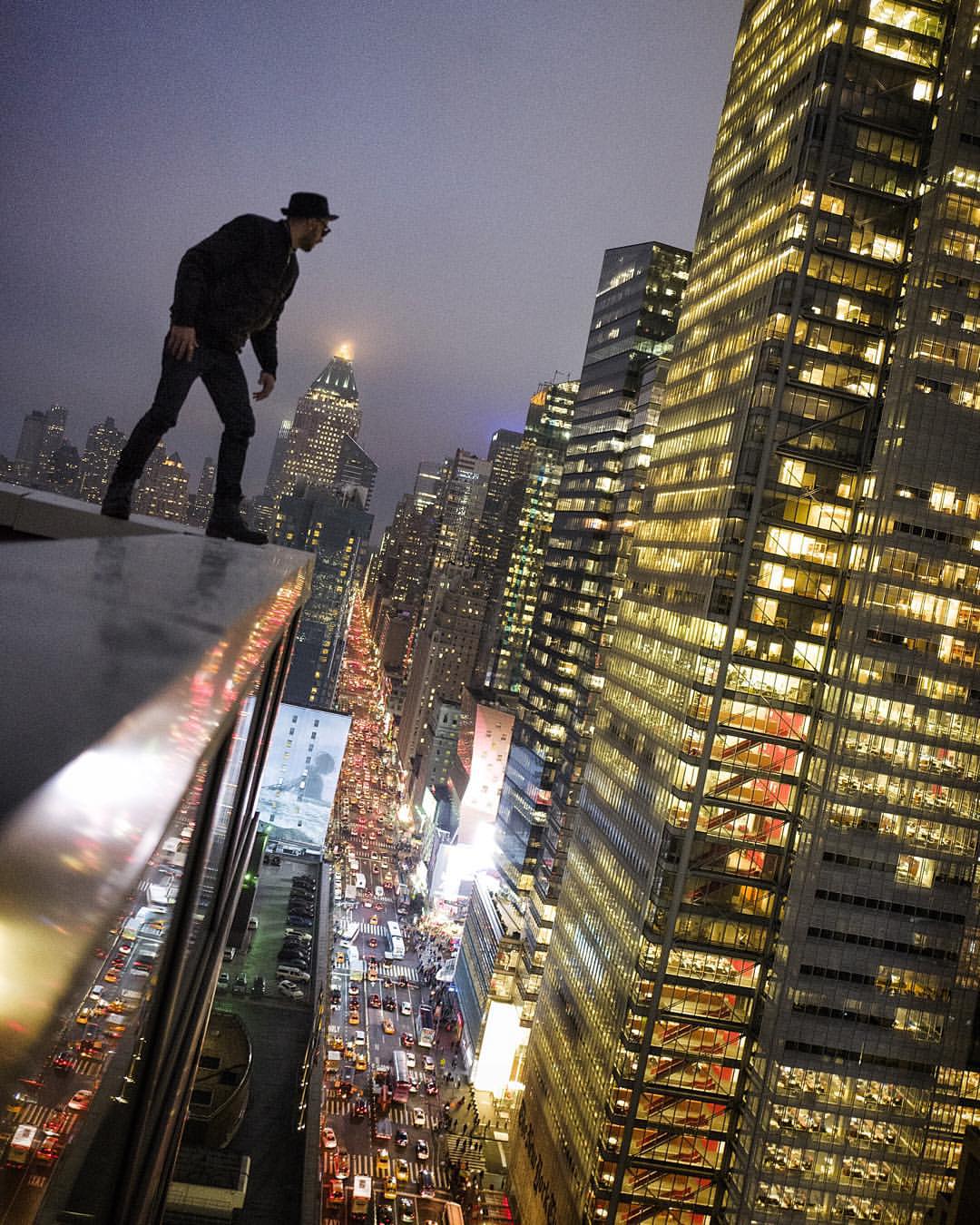
C: That’s also why you go by your initials, right? Do you think you’ll ever let the world know what JR stands for?
JR: Maybe one day but it won’t be, like, a revelation. It won’t really change anything to be honest. But I would get more fines.
C: We don’t want that.
JR: Exactly.
C: Well, I think that’s it. That’s five questions, right?
JR: I think you have a whole book.
Like this article? Check out our other exclusive interviews with other internationally renowned artists or our original videos.


